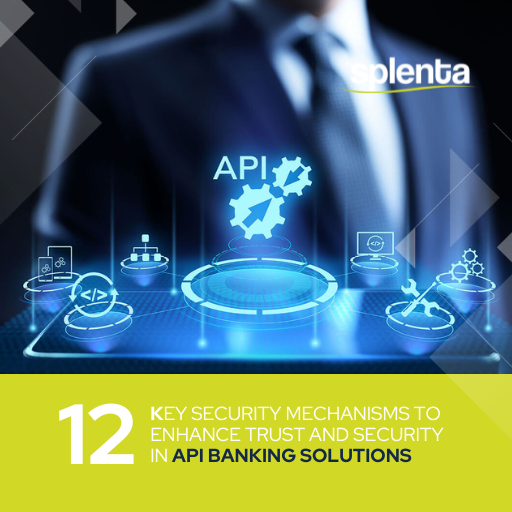12 Key Security Mechanisms to enhance Trust and Security in API Banking Solutions
By Pooja Kumari
September 15, 2023

In today’s digital-first financial landscape, Application Programming Interface (API) banking has become the backbone of financial innovation, enabling seamless transactions, data sharing, and customer experiences. However, with this increased connectivity comes heightened security concerns. Safeguarding sensitive financial data and ensuring the privacy of customers are paramount.
In this blog, we will explore 12 key security mechanisms commonly employed in API banking solutions to address these concerns and foster trust in the digital financial ecosystem.
1. Authentication:
Authentication is the first line of defence in API banking security. It ensures that only authorized entities can access the APIs. Common authentication methods include API keys, OAuth tokens, and client certificates. Multi-factor authentication (MFA) adds an extra layer of security by requiring users to provide two or more types of verification before granting access.
2. Authorization:
Authorization defines what actions authenticated users or systems are allowed to perform within the API. Implementing fine-grained authorization controls ensures that access is restricted to only the necessary resources and operations. Role-based access control (RBAC) and OAuth scopes are often used for this purpose.
3. Encryption:
Data transmitted between the client and the API should be encrypted to prevent eavesdropping and data breaches. Transport Layer Security (TLS) or its predecessor, Secure Sockets Layer (SSL), encrypts data in transit, ensuring end-to-end security.
4. Rate Limiting:
Rate limiting prevents abuse of APIs by limiting the number of requests a client can make within a specified timeframe. This mechanism helps protect against Distributed Denial of Service (DDoS) attacks and ensures fair resource allocation.
5. API Key Management:
API keys are commonly used for authentication but must be managed securely. Implementing key rotation, restricting access to specific IPs, and using HMAC (Hash-based Message Authentication Code) for key validation can enhance key security.
6. Tokenization:
Tokenization is the process of replacing sensitive data (such as credit card numbers) with tokens. This ensures that even if the token is intercepted, the actual sensitive data remains secure in the backend systems.
7. Web Application Firewall (WAF):
A WAF acts as a barrier between the API and potential threats. It can detect and block suspicious requests, protecting against common web-based attacks like SQL injection and cross-site scripting (XSS).
8. API Logging and Monitoring:
Comprehensive logging and monitoring are essential for detecting and responding to security incidents. Logs should capture details of API requests, including authentication and authorization attempts. Real-time monitoring can help identify anomalies and potential threats.
9. Threat Intelligence:
Using threat intelligence feeds and services, financial institutions can stay informed about the latest security threats and vulnerabilities. This information allows them to proactively update their security measures to protect against emerging risks.
10. Data Masking and Redaction:
Data masking and redaction techniques hide sensitive information from unauthorized users, ensuring that even system administrators cannot access sensitive customer data in plain text.
11. Secure Coding Practices:
Developers play a crucial role in API security. Following secure coding practices, such as input validation, output encoding, and avoiding hard-coded secrets, helps reduce vulnerabilities in the codebase.
12. Penetration Testing and Vulnerability Scanning:
Regular penetration testing and vulnerability scanning help identify and address security weaknesses in API banking solutions. These tests simulate real-world attacks, allowing organizations to fix vulnerabilities before they can be exploited.
Challenges and Evolving Threats:
While these security mechanisms are essential, it’s crucial to recognize that the threat landscape is constantly evolving. Financial institutions must stay vigilant and adapt their security measures accordingly. Threats like API-specific attacks and sophisticated social engineering schemes continue to challenge the industry.
Conclusion: Securing the Future of API Banking
API banking solutions are at the forefront of financial innovation, providing customers with convenient and efficient services. However, as the digital financial ecosystem expands, ensuring the security and privacy of sensitive data becomes paramount. Financial institutions must adopt a proactive approach to security, continually monitoring for emerging threats and vulnerabilities. Collaborating with industry experts and leveraging threat intelligence is essential to staying one step ahead of cybercriminals.
By implementing these security measures, financial institutions can not only protect their customers and their assets but also build trust in the digital financial services they provide. In an era where data privacy and security are paramount, API banking security is non-negotiable. It’s the key to unlocking the full potential of the digital financial landscape while keeping customers’ trust intact.
